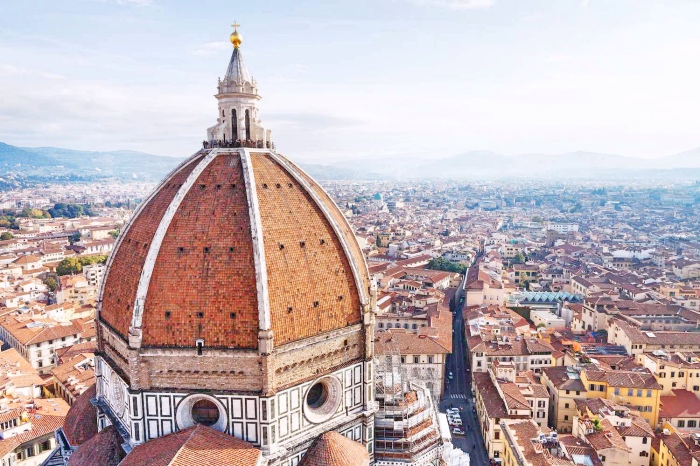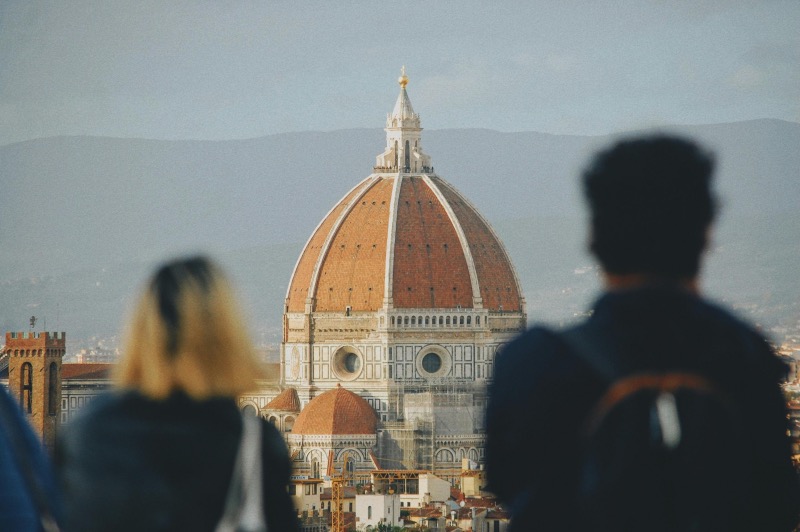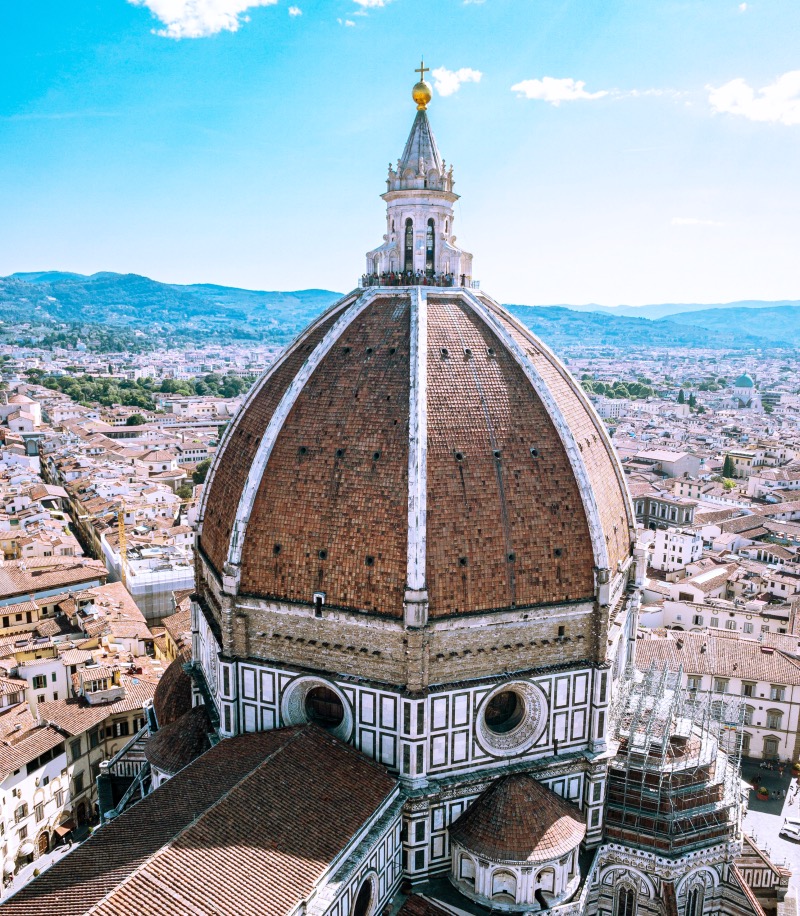
One of the most important architectural undertakings in Renaissance Florence was the completion of the cathedral of Santa Maria del Fiore, which had been left without a dome in the 13th century and needed to be completed.
The Medici family is the first to understand the importance of building monuments or completing long abandoned enterprises. These are in fact the activities that allow a useful return in terms of image to increase their political prestige. In truth, the whole city of Florence is driven by the desire to increase its prestige and become a kind of new Athens. It was because of these ambitions that the competition for the construction of the dome was launched.
In this post I tell you about the feat and the innovative technical solutions that led to the dome of Santa Maria del Fiore being one of the most beautiful in the world.
THE DOME OF SANTA MARIA DEL FIORE

Filippo Brunelleschi was called in to complete the cathedral of Santa Maria del Fiore and its dome, and he immediately understood the importance of the task. The choice had fallen on him not only to finish the church but to give the city of Florence a new symbol.
A competition was announced for the construction of the dome of Santa Maria del Fiore in 1418. Among the entrants, only Filippo Brunelleschi proposed a feasible design, but the Florence Cathedral Opera decided to put Lorenzo Ghiberti alongside him and appointed both as master builders of the enterprise.
Brunelleschi was commissioned to build an enormous dome on the largest religious building in the world at the time. For this reason, the architect travelled to Rome, together with his friend Donatello, to study the architecture of the ancient city and in particular the Pantheon, from which he would be inspired to design the dome of the Duomo.
THE INNOVATIVE IDEA TO BUILD THE DOME
Construction of the dome began in 1420 and was completed sixteen years later. The bricks used to erect the dome of the basilica of Santa Maria del Fiore were laid using the technique known as ‘herringbone’.
The base from which Brunelleschi started was the octagonal drum with oculi, built around 1415, with a diameter almost similar to that of the Pantheon in Rome.
Brunelleschi was forced to design a pointed arch dome in contrast to the Pantheon’s hemispherical dome. This was due to structural reasons concerning the weight the finished dome would have.
Brunelleschi also decided to support the entire dome with eight major ribs, positioned on the corners of the octagon of the tambour, to which he added other lighter ribs.
Brunelleschi therefore created a skeleton and completed it with a chain of 24 wooden beams, connected by iron brackets and pins, which embraced the entire structure and absorbed its lateral thrusts.
THE DOME OF SANTA MARIA DEL FIORE: SYMBOL OF FLORENCE
The dome of Florence Cathedral is the result of an extraordinary construction technique, the ‘herringbone’. This was a technique that had been abandoned for centuries and dates back to Roman times. It consisted in arranging the bricks in overlapping rings, thus allowing for a self-supporting arrangement, which therefore did not need any wooden reinforcement.
Brunelleschi used other techniques in the later stages of construction, but there are some hypotheses and no certainties. One of the most credible possibilities is the one that assumes the use of a central plumb line and a network of wires that connected opposite points of the vault’s interior.
Another major problem that Brunelleschi had to face was the forces acting on the top of the dome when the construction was almost completed. He had the architect Michelozzo build an enormous marble lantern, reminiscent of the shape of the Baptistery in Florence, which stands in front of the cathedral, to compensate for the forces of the immense dome.
The dome of Santa Maria del Fiore is therefore the synthesis of a cultural confrontation: with Roman classicism, with the classical style of its predecessor Arnolfo di Cambio, with the novelty of the Renaissance style that was characterising the face of Florence.
The grandiose work created by Brunelleschi, after many centuries, is still there to remind us that sometimes certain feats are not impossible, and we can admire the ‘herringbone’ technique as we walk along the path leading to the top. Find out how to visit Brunelleschi’s dome, admire this masterpiece up close and Florence from the top of its most beautiful symbol.

THE RELATIONSHIP BETWEEN BRUNELLESCHI AND GHIBERTI
You may be wondering how Filippo Brunelleschi was able to work freely and without clashing with another great of art in the 15th century such as Lorenzo Ghiberti, who was joined by him as master builder of the dome construction.
Brunelleschi, in order to be able to work independently and smoothly, implements a stratagem and pretends to be ill. He thus leaves Ghiberti, author of the Gates of Paradise in the Florentine Baptistery, alone at the building site. Ghiberti thus found himself in the position of having to give up the undertaking as he had no clear idea of how to proceed.
Obviously, Brunelleschi had kept the secrets to himself, which allowed him to present a feasible project to the Duomo work, which enabled him to complete the task and remain in history.

